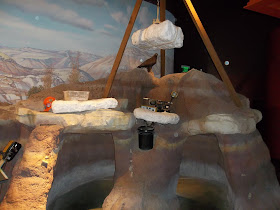This is a lump of gilsonite. Read the following from Wikipedia. Gilsonite is the registered trademark for a form of natural asphalt found only in the Uintah Basin of Utah; the non-trademarked mineral name is uintaite or uintahite. It is mined in underground shafts and resembles shiny black obsidian. Discovered in the 1860s, it was first marketed as a lacquer, electrical insulator, and waterproofing compound about twenty-five years later by Samuel H. Gilson. By 1888 Gilson had started a company to mine the substance, but soon discovered the vein was located on the Uintah and Ouray Indian Reservation. Under great political pressure Congress removed some 7,000 acres (28 km2) from the reservation on May 24, 1888 to allow the mining to proceed legally. Gilsonite mining became the first large commercial enterprise in the Uintah Basin, causing most of its early population growth.
This unique mineral is used in more than 160 products, primarily in dark-colored printing inks and paints, oil well drilling muds and cements, asphalt modifiers, foundry sand additives, and a wide variety of chemical products. The trademark, registered in 1921, belongs to the American Gilsonite Company.
Mining Gilsonite during World War II was by hand, using a six pound pick and then shoveling the ore into 200 pound sacks, which were sewn by hand. In 1949 at the Parriette Gilsonite mine near Myton, Utah, Reed Smoot McConkie set the world record for ore mined by hand. Using his pick and shovel, he mined 175 bags of ore in an 8 hour day, 950 bags in a six day week, 1925 bags in a month and 15,000 bags in one year.
Gilsonite-brand uintahite's earliest applications included paints for buggies and emulsions for beer-vat lining. It was used by Ford Motor Company as a principal component of the Japan Black lacquer used on most of the Ford Model T cars. |


































Now, that is a ton of information, and I want to go see for myself! Thanks.
ReplyDelete